Introductions
Introduction of Northrop F-5:
The Northrop F-5 is a family of supersonic light fighter aircraft initially designed as a privately funded project in the late 1950s by Northrop Corporation. There are two main models, the original F-5A and F-5B Freedom Fighter variants and the extensively updated F-5E and F-5F Tiger II variants. The design team wrapped a small, highly aerodynamic fighter around two compact and high-thrust General Electric J85 engines, focusing on performance and a low cost of maintenance. Smaller and simpler than contemporaries such as the McDonnell Douglas F-4 Phantom II, the F-5 cost less to procure and operate, making it a popular export aircraft. Though primarily designed for a day air superiority role, the aircraft is also a capable ground-attack platform. The F-5A entered service in the early 1960s. During the Cold War, over 800 were produced through 1972 for US allies. Though at the time the United States Air Force (USAF) did not have a need for a light fighter, it did procure approximately 1,200 Northrop T-38 Talon trainer aircraft, which was based on Northrop's N-156 fighter design.
After winning the International Fighter Aircraft Competition, a program aimed at providing effective low-cost fighters to American allies, in 1972 Northrop introduced the second-generation F-5E Tiger II. This upgrade included more powerful engines, larger fuel capacity, greater wing area and improved leading edge extensions for better turn rates, optional air-to-air refueling, and improved avionics including air-to-air radar. Primarily used by American allies, it remains in US service to support training exercises. It has served in a wide array of roles, being able to perform both air and ground attack duties; the type was used extensively in the Vietnam War. A total of 1,400 Tiger IIs were built before production ended in 1987. More than 3,800 F-5s and the closely related T-38 advanced trainer aircraft were produced in Hawthorne, California. The F-5N/F variants are in service with the United States Navy and United States Marine Corps as adversary trainers. Over 400 aircraft were in service as of 2021.
The F-5 was also developed into a dedicated reconnaissance aircraft, the RF-5 Tigereye. The F-5 also served as a starting point for a series of design studies which resulted in the Northrop YF-17 and the F/A-18 naval fighter aircraft. The Northrop F-20 Tigershark was an advanced variant to succeed the F-5E which was ultimately canceled when export customers did not emerge.
Introduction of IRIAF:
The Islamic Republic of Iran Air Force is the aviation branch of the Islamic Republic of Iran Army. The present air force came into being when the Imperial Iranian Air Force was renamed in 1979 following the Iranian Revolution. The IRIAF was heavily involved in the Iran–Iraq War, carrying out major operations like Operation Kaman 99, Operation Sultan 10, the H-3 airstrike, and the first attack on a nuclear reactor in history, Operation Scorch Sword. As a result of eight years of aerial combat in that conflict, the IRIAF has the second highest claimed number of fighter aces in the region, exceeded only by the Israeli Air Force; as many as seven IRIAF pilots claimed more than six kills, mostly achieved in the F-14 Tomcat. Veterans of the Iran–Iraq War would go on to form the core of the IRIAF command.
Notes:
Credit to Pan for the aircraft
(Also, I’ll also make the liveries of the aircrafts that IRIAF uses in Iraq-Iran war)
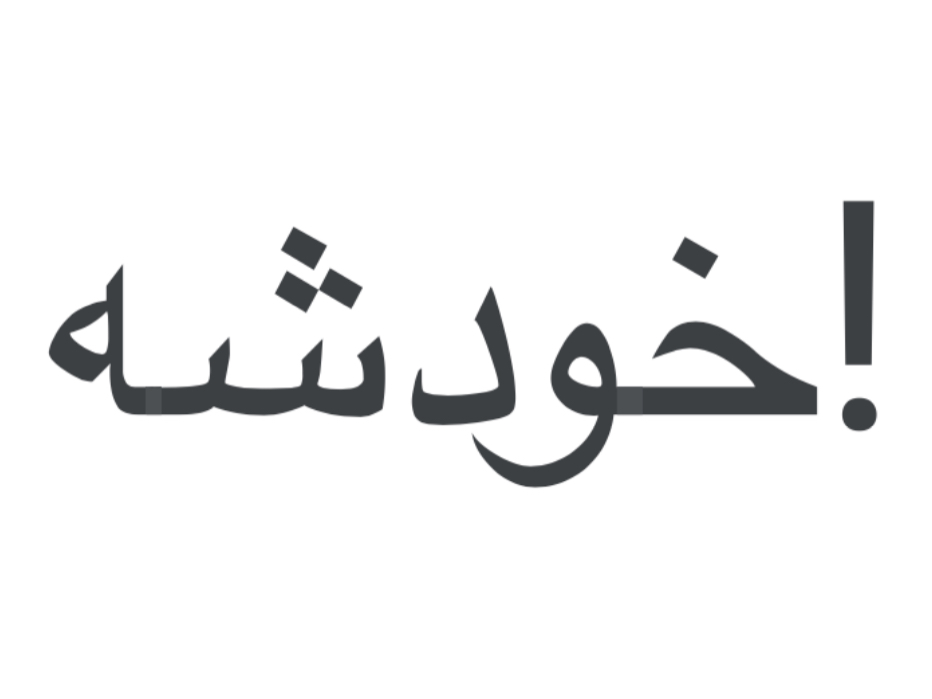
Specifications
Spotlights
- RicardoACE 1.9 years ago
- Otana 1.9 years ago
General Characteristics
- Predecessor Northrop F-5E Tiger II (Royal Malaysian Airforce)
- Successors 3 airplane(s)
- Created On iOS
- Wingspan 27.3ft (8.3m)
- Length 45.3ft (13.8m)
- Height 12.6ft (3.8m)
- Empty Weight N/A
- Loaded Weight 6,890lbs (3,125kg)
Performance
- Power/Weight Ratio 7.338
- Wing Loading 21.2lbs/ft2 (103.3kg/m2)
- Wing Area 325.6ft2 (30.3m2)
- Drag Points 2945
Parts
- Number of Parts 546
- Control Surfaces 5
- Performance Cost 2,359

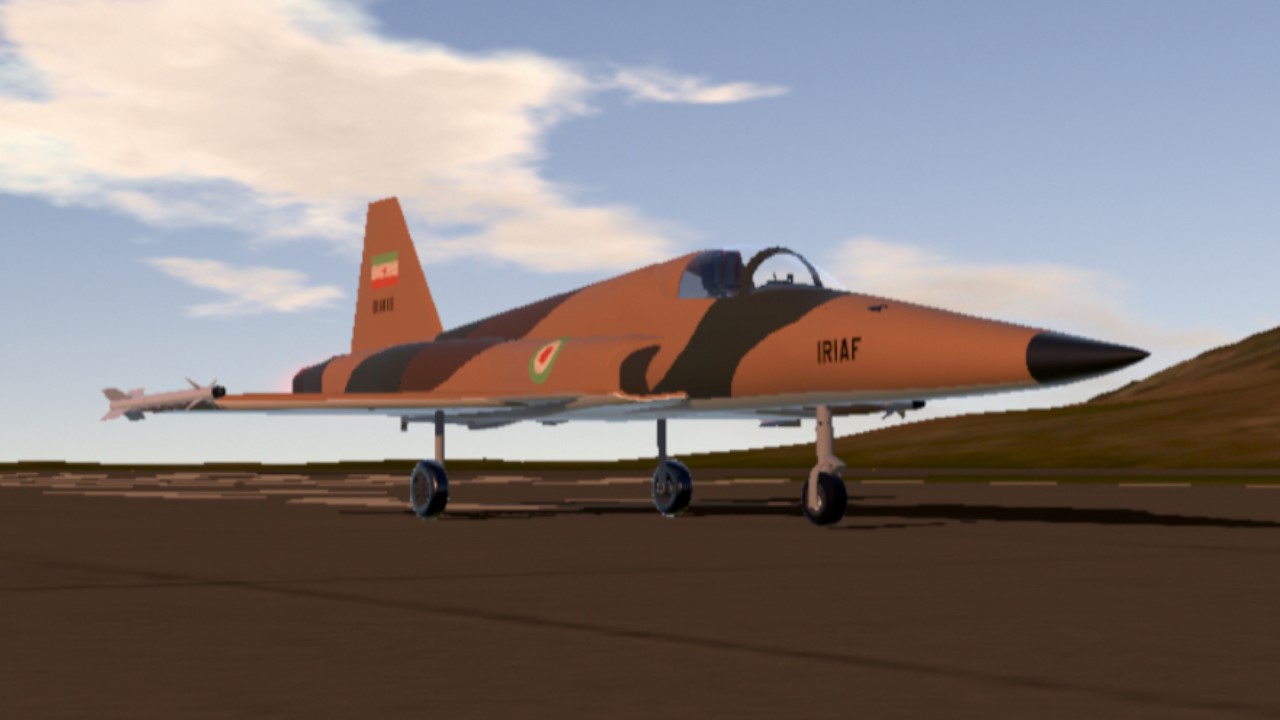
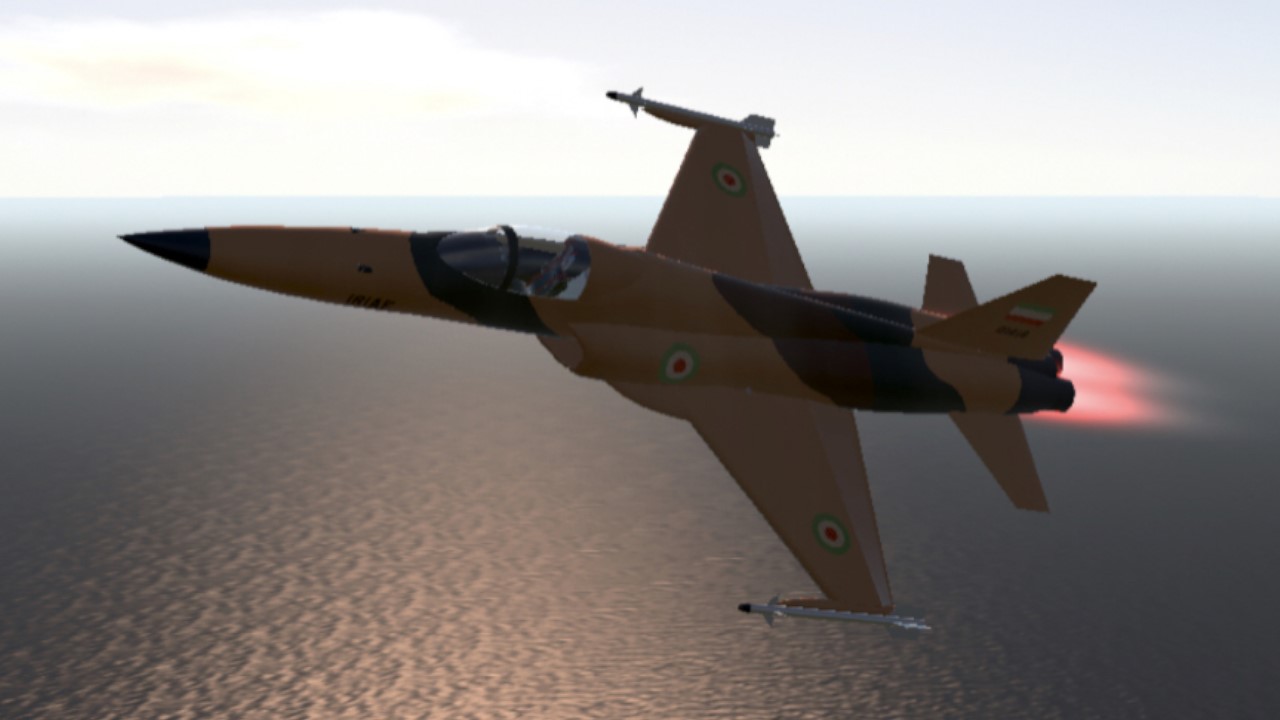

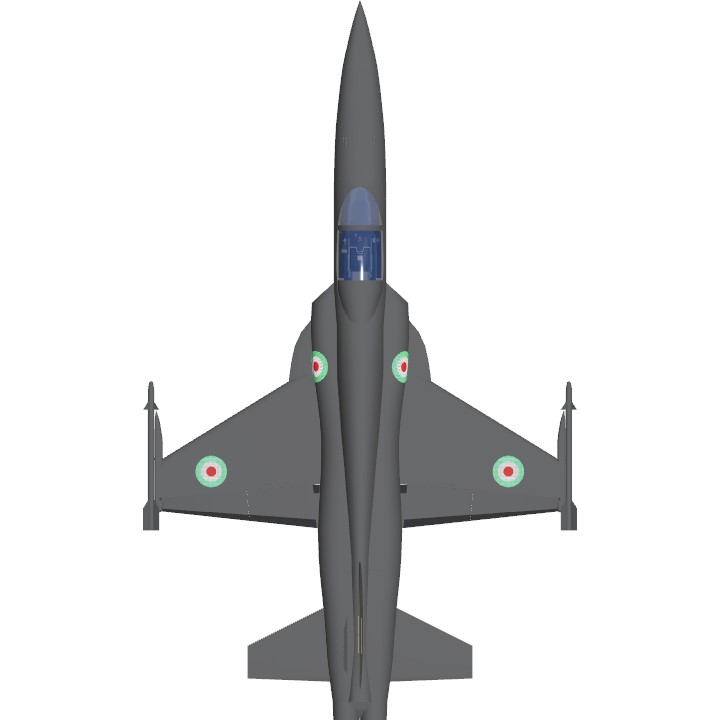
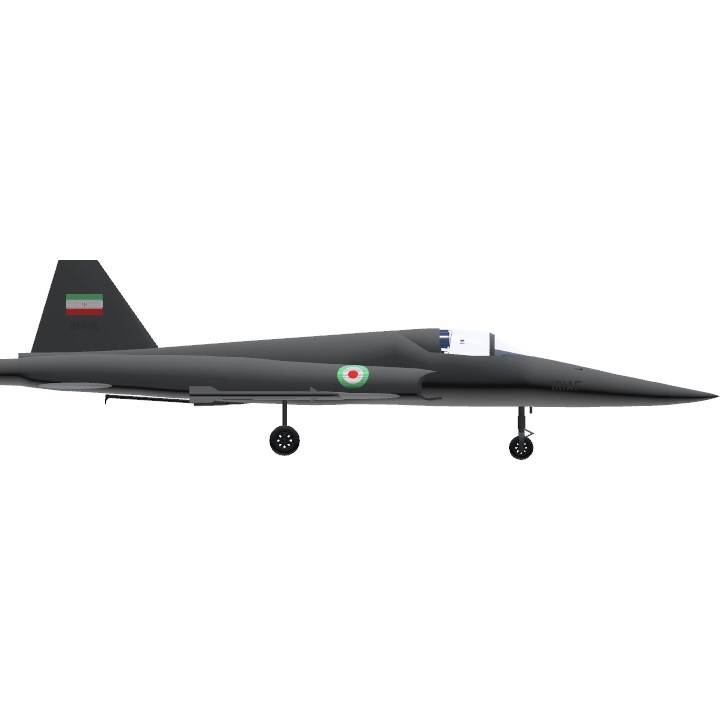
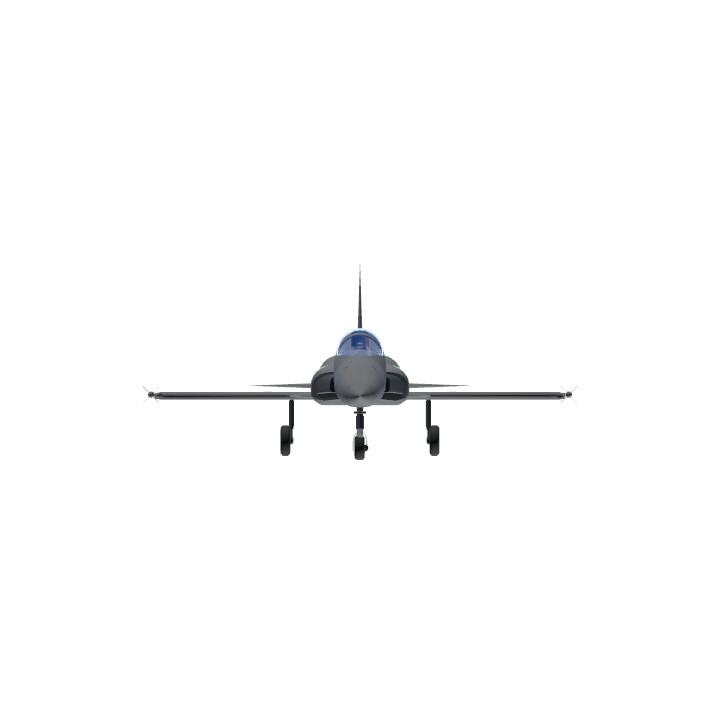
Song that I suggest that you can play while you’re playing with this (although this song is Iraqi) (this whole sentence is clickable)
Tag requests:
@5
@Pan
Prepare to assume the form of nine distinct symbols, each with its own distinct
با تشکر!
@mmd2009
عالیه!!
Thanks
@MobileBuilder21
Great work
@CR929thenewSPplayer love u bro
با تشکر!
@SepahpasdaranIRAN
آفرین خیلی خوبه
Thanks for reminding!
@CaptainSquadronLeaderX
@CR929thenewSPplayer 🤓 Uh… actually snort that’s the HESA Azarakhsh, a rebuilt and renamed F-5 claimed to be Iran’s first domestically built combat jet fighter snort🤓 (we all know it’s a unlicensed version of the F-5)
Thanks!
@DLAERODYNAMIC @Bozorgi
Yes I will
@florky
make f-14 iran next
Well done look great